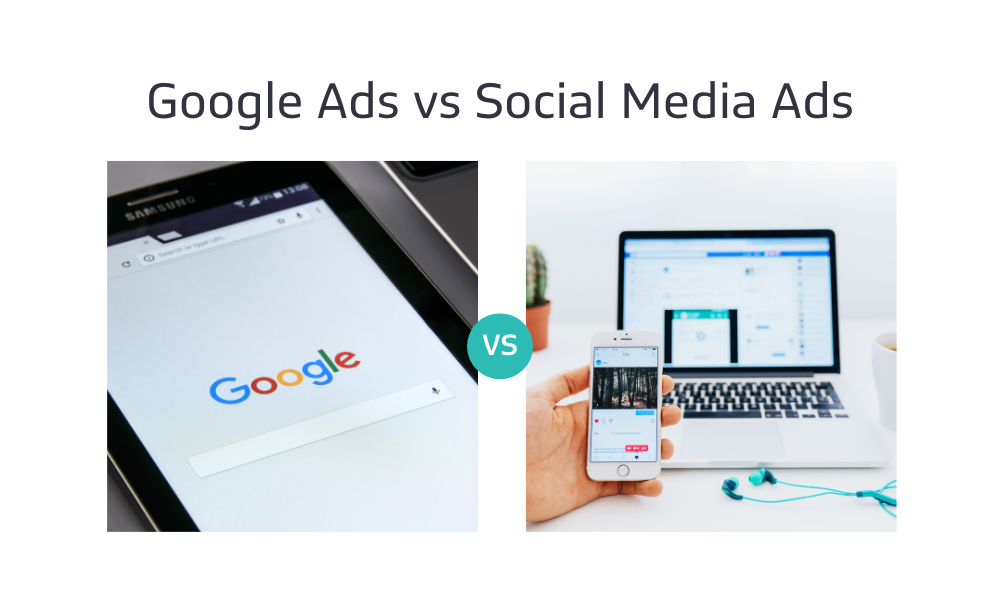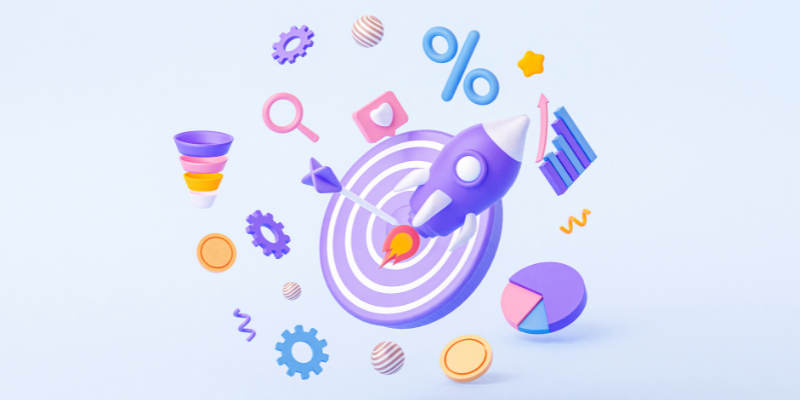In today’s digital age, there are a variety of online platforms through which businesses can target their potential audience. The two most prominent ones in this landscape are Google Ads and Social Media Ads (Facebook ads, Instagram ads, LinkedIn ads, etc).

Each of these advertising methods comes with its own set of advantages and unique characteristics, making them valuable tools in a marketer’s toolkit. In this blog post, we’ll explore the key differences between these two advertising giants, examining their strengths in targeted advertising, the intent of potential customers, reach, competition, ad formats, and audience.
By the end of this blog post, you’ll have a clearer understanding of which platform best aligns with your marketing goals and how you might leverage both to maximise your digital advertising strategy.
Let’s delve a bit deeper into each of these key points for a more detailed look at the differences between Google Ads and Social Media Ads based on the five main categories listed below.
- Targeted digital advertising
- Purchase intent
- Reach
- Competition
- Ad formats
1. Targeted Digital Advertising:

Google Ads: With Google Ads, you can target your ads based on specific keywords people use in their search queries. You can also narrow it down by geographic location and even the time of day. This precision ensures that your ads are displayed to individuals actively searching for products or services like yours, making it more likely they’ll click and convert.
Social Media Ads: Social media platforms offer a different kind of targeting. You can define your audience based on various factors like age, interests, behavior, and even recent online activity. This allows you to reach people who might not be actively searching for your products but could be interested based on their online habits and demographics.
LinkedIn goes a step further, particularly in terms of B2B marketing, allowing you to target specific sectors, companies, job titles, and levels of seniority.
2. Purchase intent:
Google Ads: When someone types a query into Google, it’s often because they have a specific need or desire, which could be purchasing a product or service. This intent to purchase is high, making Google Ads effective for capturing potential customers at the right moment.
Social Media Ads: While social media ads can generate a lot of traffic, the intent to purchase is generally lower. People might be on social media for various reasons, not necessarily to shop. Therefore, social media advertising is better suited for brand awareness, engagement, and nurturing leads over time.
3. Reach:

Google Ads: Google is the most widely used search engine globally and it processes over 40,000 search queries each second, resulting in a staggering total of more than 1.2 trillion web searches annually. This means your ads can potentially reach a massive audience actively seeking information.
Social Media Ads: Just like Google, Facebook also possesses an extensive global audience. It has over 1.55 billion monthly active users, which accounts for more than one-fifth of the world’s total population, and this doesn’t even include inactive or seldom-used accounts. In 2022, around 89 percent of the New Zealand population were active social media users.
Yet, instead of merely presenting advertisers and their messages to this extensive audience, the real power of Facebook’s user base lies in the remarkable precision with which advertisers can pinpoint and engage with Facebook’s users. Your reach depends on how well you target your audience based on their interests and behaviors.
4. Competition:
Google Ads: Due to its immense popularity, Google Ads can be competitive. This competition often results in higher costs per click for popular keywords. This could be a challenge for businesses on a tight budget, so you will need to be very careful about how you set up targeted keywords, negative keywords, and other Google Ad campaign settings.
Social Media Ads: Social media ads tend to be more budget-friendly. They may not have the same keyword competition issues as Google Ads, making them a cost-effective option for businesses with limited financial resources.
5. Ad formats:
Google Ads: Google primarily offers text ads and display ads. While they are effective, they may limit your creativity in terms of visual content and engagement.
Social Media Ads: Social media platforms provide a wide range of ad formats, including images, videos, carousels, and interactive content. This flexibility allows you to be more creative and engage your audience in various ways.
If you’re still unsure which one would work well for your business, here’s a handy table from GoDaddy that could be helpful for your needs.
In conclusion, both Google Ads and Social Media Ads have their unique advantages and are suitable for different marketing objectives. Depending on your specific goals, target audience, and budget, you should be able to arrive at a decision. Combining both can also be a powerful strategy to cover a broader spectrum of potential customers and achieve a well-rounded digital marketing approach.
We understand every business is unique. That’s why we tailor our Google Ads and Social Media Ads strategies to match your specific needs and goals. Contact us today to discuss how our services can help your business thrive in the digital landscape.





